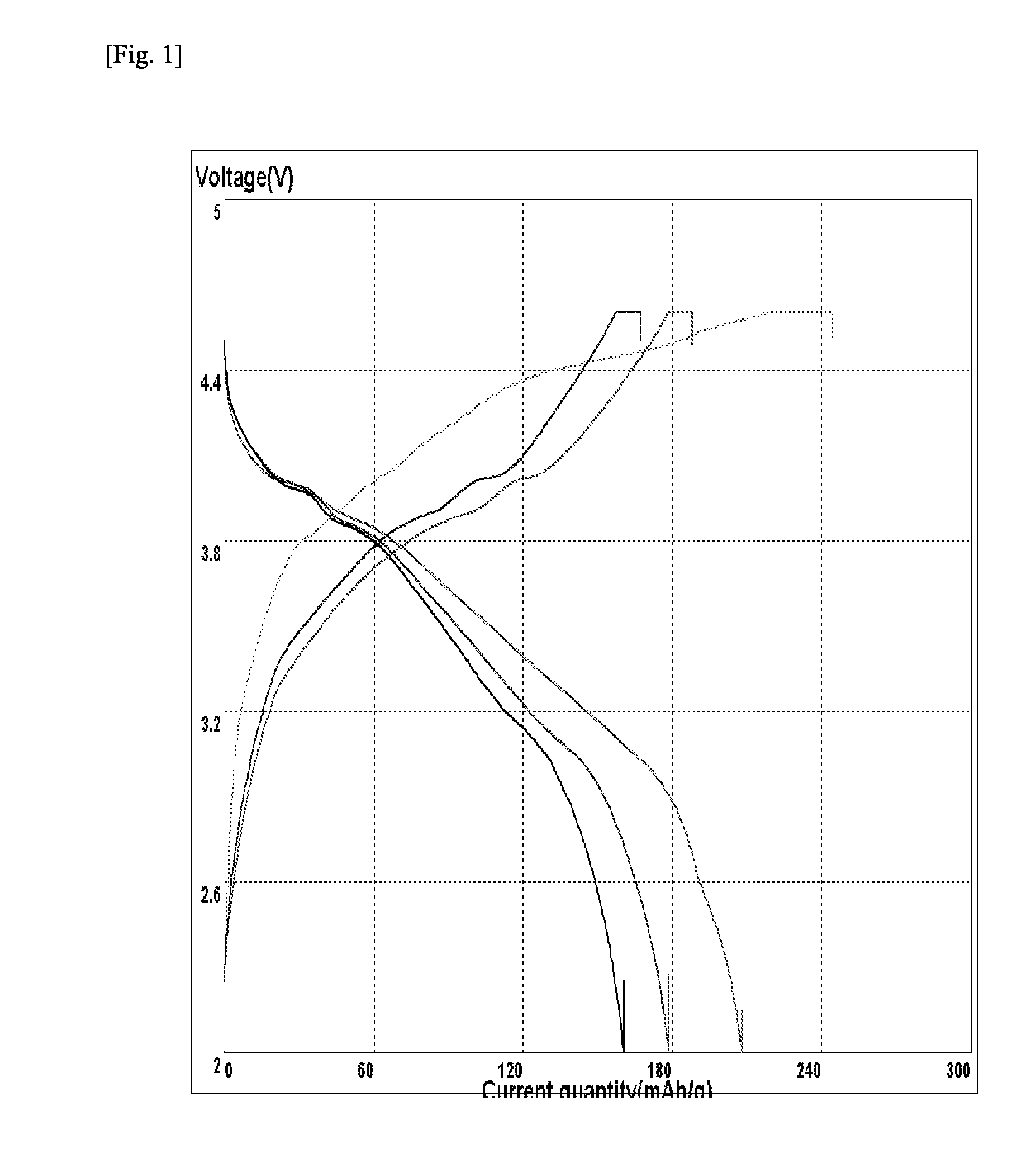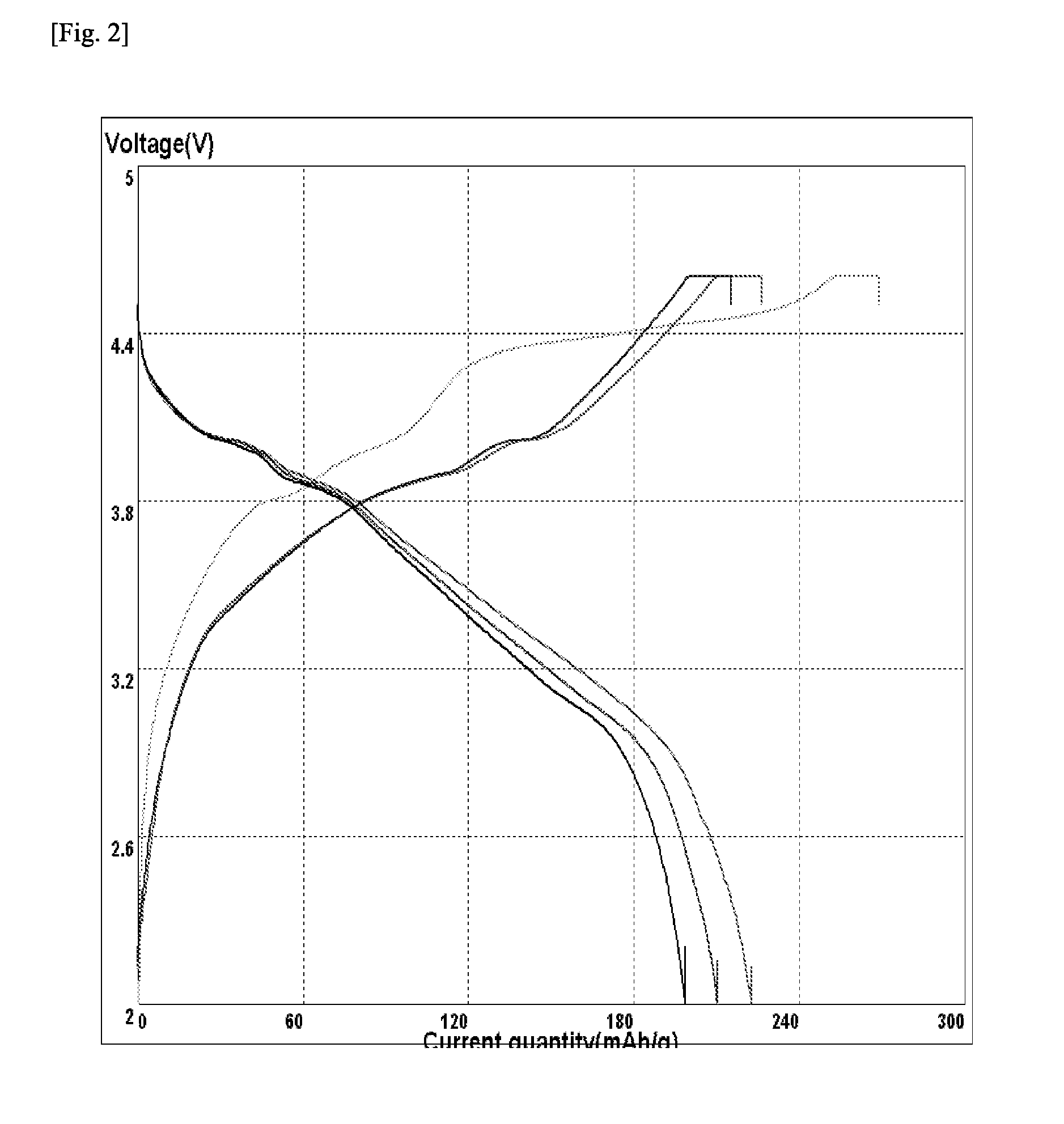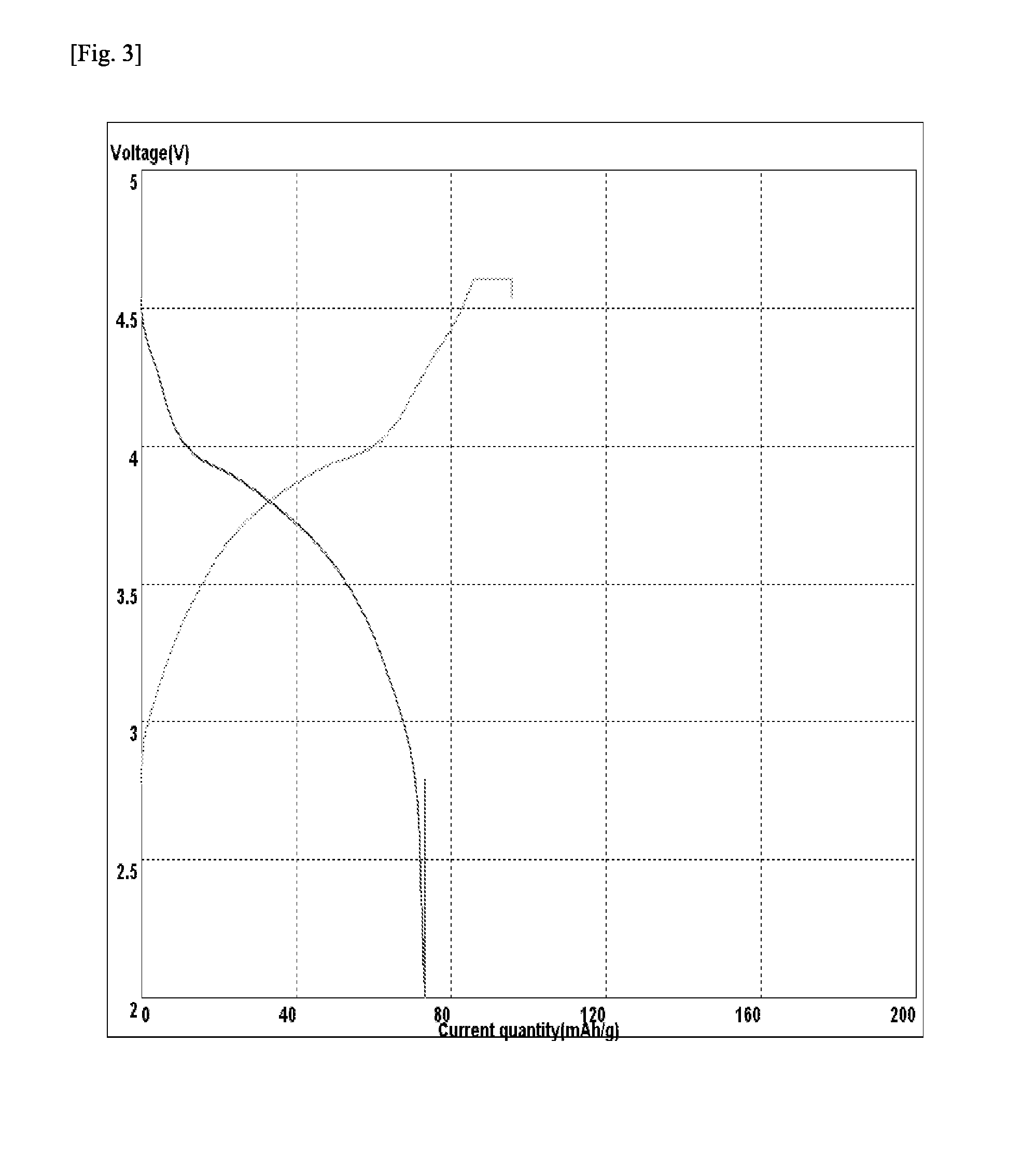Positive electrode active material with high capacity and lithium secondary battery including the same
a lithium secondary battery, high-capacity technology, applied in the direction of non-metal conductors, cell components, sustainable manufacturing/processing, etc., can solve the problems of weak price competitiveness, limited secondary battery application as driving power source, inferior structural stability, etc., to achieve great irreversible capacity, excellent thermal stability, great charging/discharging capacity
- Summary
- Abstract
- Description
- Claims
- Application Information
AI Technical Summary
Benefits of technology
Problems solved by technology
Method used
Image
Examples
embodiment 1
Fabrication of Positive Electrode
[0113]0.5Li2MnO3-0.5Li(Mn0.33Ni0.33Cu0.33)O2 as a lithium manganese oxide having a layered structure and LiMn2O4 as spinel-based lithium manganese oxide were mixed in the ratio of 2:1 which was determined to be 80 wt % of the total weight of the positive electrode mix, and 7 wt % of denka black and 7 wt % of graphite as conductive materials and 6 wt % of PVDF as a binder were added to an NMP to create slurry. The slurry was applied to a positive electrode current collector and then rolled and dried to fabricate a positive electrode for a secondary battery.
[0114]Fabrication of Lithium Secondary Battery
[0115]The thusly fabricated positive electrode was included, a porous polyethylene separator was interposed between graphite-based negative electrodes, and lithium electrolyte was then injected to fabricate a coin type lithium secondary battery.
[0116]The coin type lithium secondary battery was CC / CV-charged at 4.6 V based on a positive electrode potentia...
embodiment 2
[0117]A positive electrode was fabricated through the same process as that of Embodiment 1 and a lithium secondary battery was fabricated in the same manner as that of Embodiment 1, except that 86 wt % of LiMn2O4, instead of LiMn2O4, 7 wt % of graphite, and 7 wt % of denka black were fabricated in the form of a complex through a high energy milling process, as the spinel-based lithium manganese oxide in Embodiment 1.
experimental example
[0119]In order to confirm the operational effects in the 3V range of the positive electrode active material according to the present invention, a half cell was fabricated through the same method, except for the use of a lithium metal as a negative electrode active material in Embodiment 1.
[0120]The full cell or half cell secondary batteries fabricated according to Embodiments 1 and 2, Comparative Example, and Experimental Example were repeatedly charged and discharged under the condition of 0.1 C to measure the change in capacity according to cycles. The results are shown in FIGS. 1 to 4 in turn.
[0121]FIG. 1 shows tilts of the current-voltage changes and profiles according to an increase in cycle in the 3V to 4V range of the secondary battery according to Embodiment 1. FIG. 2 shows tilts of the current-voltage changes and profiles according to an increase in cycle in the 3V to 4V range of the secondary battery according to Embodiment 2. FIG. 3 shows tilts of the capacities and profi...
PUM
| Property | Measurement | Unit |
|---|---|---|
| Electric potential / voltage | aaaaa | aaaaa |
| Electric potential / voltage | aaaaa | aaaaa |
| Temperature | aaaaa | aaaaa |
Abstract
Description
Claims
Application Information
 Login to View More
Login to View More - R&D
- Intellectual Property
- Life Sciences
- Materials
- Tech Scout
- Unparalleled Data Quality
- Higher Quality Content
- 60% Fewer Hallucinations
Browse by: Latest US Patents, China's latest patents, Technical Efficacy Thesaurus, Application Domain, Technology Topic, Popular Technical Reports.
© 2025 PatSnap. All rights reserved.Legal|Privacy policy|Modern Slavery Act Transparency Statement|Sitemap|About US| Contact US: help@patsnap.com



